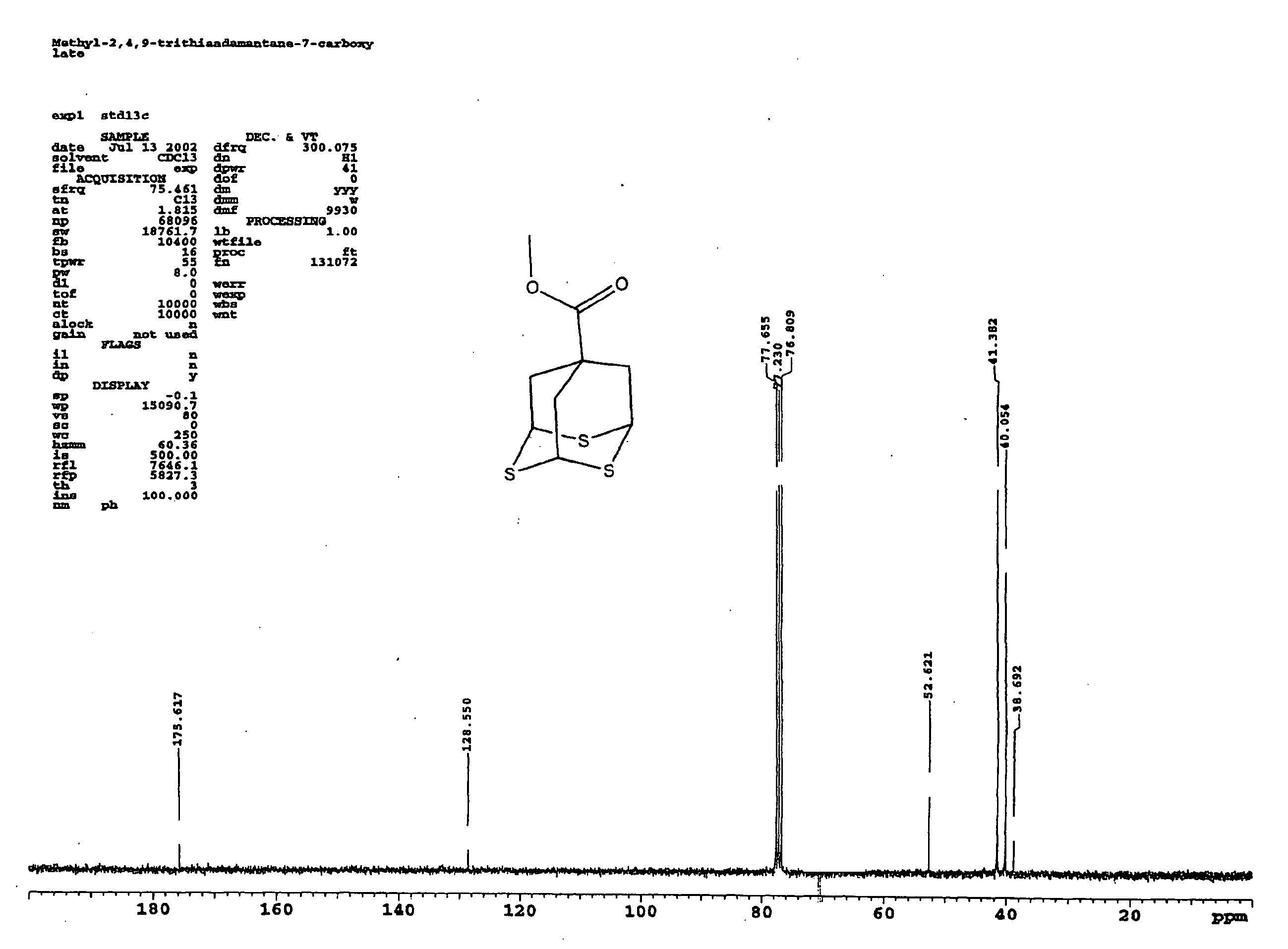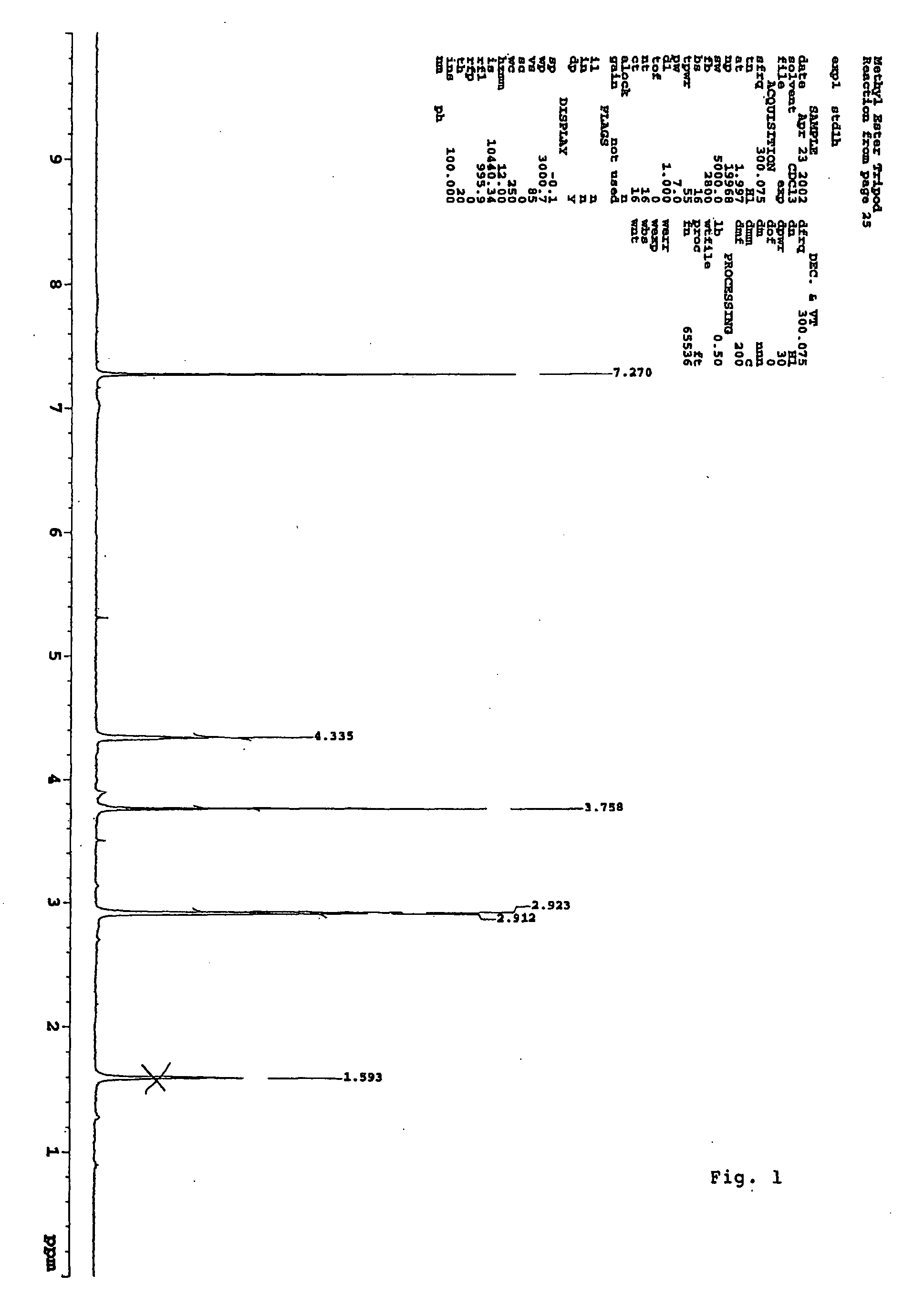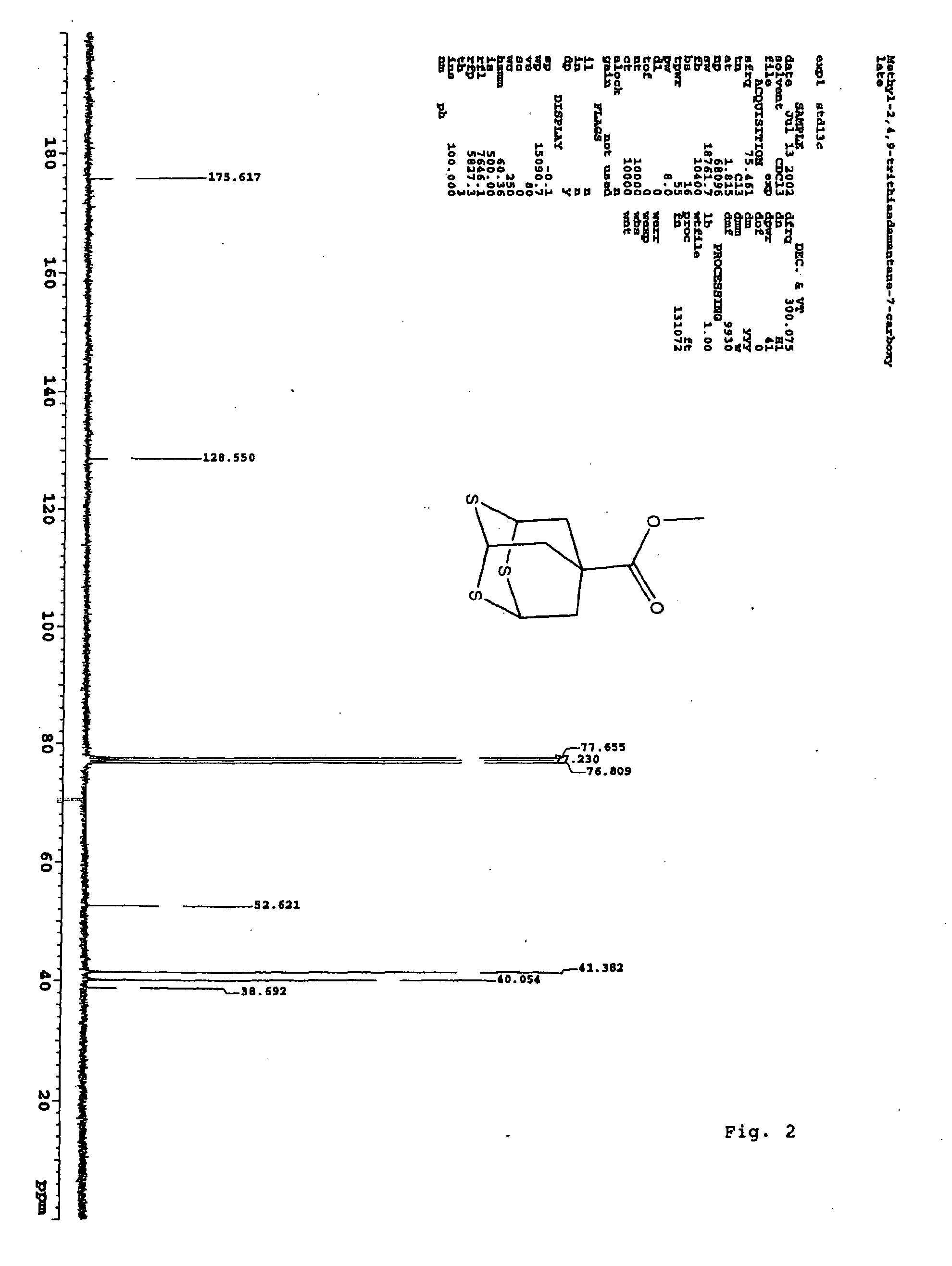Methyl 2,4,9-trithiaadamantane-7-carboxylate
a technology of trithiaadamantane and carboxylate, which is applied in the field of methyl 2, 4, 9trithiaadamantane7carboxylate, can solve the problems of uncontrollable and unpredictable orientation of the surface orientation of the resultant, and inability to provide useful alternate intermediates in the prior ar
- Summary
- Abstract
- Description
- Claims
- Application Information
AI Technical Summary
Benefits of technology
Problems solved by technology
Method used
Image
Examples
examples
[0026] In order to demonstrate practice of the present invention, the following examples have been prepared and tested. The examples should not, however, be viewed as limiting the scope of the invention. The claims will serve to define the invention.
Methyl 2,4,9-trithiaadamantane-7-carboxylate
[0027] A solution of 5 grams of methyl triallyl acetate in 100 milliliters freshly distilled methylenechloride was stirred and cooled to −78° C. in a dry-ice acetone bath. Ozone was bubbled through the cooled mixture until a light-blue color persisted. The ozone line was then disconnected and the excess ozone was removed by argon flow for 10 minutes. 6.0 grams dimethyl sulfide was added to the reaction mixture at −78° C. The mixture was slowly warmed up to room temperature. The mixture was then concentrated via rotary evaporation. To this mixture, 100 milliliters of methylenechloride, 28.0 grams of Lawesson's reagent, and 100 milliliters of neat BF3.Et2O were added respectively. The mixture ...
PUM
| Property | Measurement | Unit |
|---|---|---|
| temperature | aaaaa | aaaaa |
| mole ratio | aaaaa | aaaaa |
| metallic | aaaaa | aaaaa |
Abstract
Description
Claims
Application Information
 Login to View More
Login to View More - R&D
- Intellectual Property
- Life Sciences
- Materials
- Tech Scout
- Unparalleled Data Quality
- Higher Quality Content
- 60% Fewer Hallucinations
Browse by: Latest US Patents, China's latest patents, Technical Efficacy Thesaurus, Application Domain, Technology Topic, Popular Technical Reports.
© 2025 PatSnap. All rights reserved.Legal|Privacy policy|Modern Slavery Act Transparency Statement|Sitemap|About US| Contact US: help@patsnap.com



